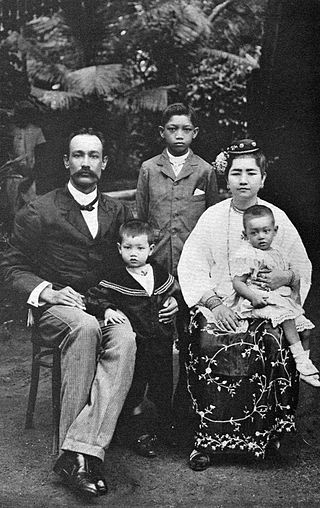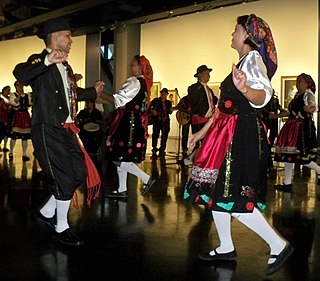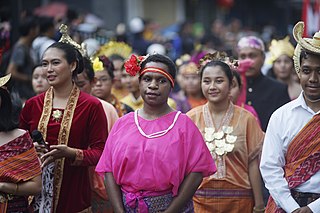The terms multiracial people refer to people who are of multiple races, and the terms multi-ethnic people refer to people who are of more than one ethnicities. A variety of terms have been used both historically and presently for multiracial people in a variety of contexts, including multiethnic, polyethnic, occasionally bi-ethnic, Métis, Muwallad, Melezi, Coloured, Dougla, half-caste, ʻafakasi, mestizo, mutt, Melungeon, quadroon, octoroon, sambo/zambo, Eurasian, hapa, hāfu, Garifuna, pardo, and Gurans. A number of these once-acceptable terms are now considered offensive, in addition to those that were initially coined for pejorative use.

Half-caste is a term used for individuals of multiracial descent. The word caste is borrowed from the Portuguese or Spanish word casta, meaning race. Terms such as half-caste, caste, quarter-caste and mix-breed were used by colonial officials in the British Empire during their classification of indigenous populations, and in Australia used during the Australian government's pursuit of a policy of assimilation. In Latin America, the equivalent term for half-castes was Cholo and Zambo. Some people now consider the term offensive.

Portuguese creoles are creole languages which have Portuguese as their substantial lexifier. The most widely-spoken creoles influenced by Portuguese are Cape Verdean Creole, Guinea-Bissau Creole and Papiamento.

Anglo-Indian people are a distinct minority community of mixed-race British and Indian ancestry. During the colonial period, their ancestry was defined as British paternal and Indian maternal heritage; post-independence, "Anglo-Indian" has also encompassed other European and Indian ancestries. Anglo-Indians' first language is usually English. Prior to 1911, various designations like "Eurasian" or "Indo-Briton" were used to describe this community.

Afro-Asians, African Asians, Blasians, or simply Black Asians are people of mixed Asian and African ancestry. Historically, Afro-Asian populations have been marginalised as a result of human migration and social conflict.
Eurasian Singaporeans is a term that refers to Singaporeans of mixed European–Asian descent.
Burgher people, also known simply as Burghers, are a small Eurasian ethnic group in Sri Lanka descended from Portuguese, Dutch, British and other Europeans who settled in Ceylon. The Portuguese and Dutch had held some of the maritime provinces of the island for centuries before the advent of the British Empire. Burgher people are often referred to as belonging to one of two sub-groups, either Dutch Burghers or Portuguese Burghers, though both are of mixed descent.
Hāfu is a Japanese language term used to refer to a person born in Japan with half Asian and half non-Asian ancestry. The word can also be used to describe anyone with mixed-racial ancestry in general. As many consider Japan to be one of the most homogeneous societies on the planet, children who have one non-Japanese citizen parent or one non-Asian parent are called hāfu Japanese and often face prejudice and discrimination from Japanese citizens. Hāfu individuals are well represented in Japanese media and abroad, and recent studies in the 2010s estimate that 1 in 30 children born in Japan are born to interracial couples.

The Anglo-Burmese people, also known as the Anglo-Burmans, are a community of Eurasians of Burmese and European descent; they emerged as a distinct community through mixed relationships between the British and other Europeans and Burmese people from 1826 until 1948 when Myanmar gained its independence from the British Empire. Those who could not adjust to the new way of life after independence and the ushering in of military dictatorship are dispersed throughout the world. How many stayed in Myanmar is not accurately known.

The Kristang are a creole and indigenous ethnic group of people of primarily Portuguese and Malay descent, with substantial Dutch, British, Jewish, Chinese, and Indian ancestry. They are based mostly in Malaysia, Singapore, and Australia, the last being due to significant emigration in the second half of the twentieth century. People of this ethnicity also have, besides Malay and Portuguese, Dutch ancestry due to intermarriages, which is common among the Kristang. In addition, due to persecution by the Portuguese Inquisition in the region, a lot of the Jews of Malacca assimilated into the Kristang community. The creole group arose in Malacca between the 16th and 17th centuries, when the city was a port and base of the Portuguese Empire. Today the Malaysian government classifies them as Portuguese-Eurasians; in Singapore, they are primarily known as Kristang. Today, elements of Kristang culture and identity, especially the Kristang language, which is classified as critically endangered by the UNESCO Red Book of Endangered Languages, are currently undergoing cultural and language revitalisation in both Malaysia and Singapore. The Kabesa or leader of the community worldwide and in Singapore is the Kristang Singaporean science fiction writer and linguist Kevin Martens Wong, while the current Regedor or Headman of the Portuguese Settlement of Malacca, the original, geographical, cultural and spiritual centre of the Malacca Portuguese identity, is Oliver Lopez.

The Mardijker people refer to an ethnic community in the Dutch East Indies made up of descendants of freed slaves. They could be found at all major trading posts in the East Indies. They were mostly Christian, of various ethnicities from conquered Portuguese and Spanish territories, and some with European ancestry. They spoke Mardijker Creole, a Portuguese-based creole, which has influenced the modern Indonesian language.

Interracial marriage is a marriage involving spouses who belong to different "races" or racialized ethnicities.

Native Indonesians, also known as Pribumi or Bumiputra, are Indonesians whose ancestral roots lie mainly in the archipelago, comprising around 1,300 ethnic groups and predominantly of Austronesian and Melanesian descent. In contrast are Indonesians of known (partial) foreign descent, like Chinese Indonesians, Arab Indonesians, Indian Indonesians, Japanese Indonesians, and Indo-Europeans (Eurasians).

Mestiço is a Portuguese term that referred to persons of mixed European and Indigenous non-European ancestry in the former Portuguese Empire.

Luso-Indians, or Portuguese-Indian, is a subgroup of the larger Eurasian multiracial ethnic creole people of Luso-Asians. Luso-Indians are people who have mixed Indian and Portuguese ancestry or people of Portuguese descent born or living or originating in former Portuguese Indian colonies, the most important of which were Goa and Damaon of the Konkan region in the present-day Republic of India, and their diaspora around the world, the Anglosphere, Lusosphere, the Portuguese East Indies such as Macao, etc.

The Indo people or Indos are Eurasian people living in or connected with Indonesia. In its narrowest sense, the term refers to people in the former Dutch East Indies who held European legal status but were of mixed Dutch and indigenous Indonesian descent as well as their descendants today.
Luso-Asians are Eurasian people whose ethnicity is partially or wholly Portuguese and ancestrally are based in or hail primarily from Portugal, South Asia, Southeast Asia, and East Asia. They historically came under the cultural and multi-ethnic sway of the Portuguese Empire in the East and retain certain aspects of the Portuguese language, Roman Catholic faith, and Latin cultural practices, including internal and external architecture, art, and cuisine that reflect this contact. The term Luso comes from the Roman empire's province of Lusitania, which roughly corresponds to modern Portugal.
Bayingyi people also known as Luso-Burmese, are a subgroup ethnicity of Luso-Asians, and are the descendants of Portuguese mercenaries or adventurers who came to Myanmar (Burma) in the 16th and 17th centuries. They were recruited into the Royal Burmese Armed forces' artillery and musketeers corps, and over centuries of continued settlement in the Mu Valley, particularly the Sagaing Region of Myanmar, have been more or less assimilated into the dominant ethnic group of the region, the Bamar, while keeping their sense of Portuguese identity and Roman Catholic religion.
Miscegenation is marriage or admixture between people who are members of different races. The word is now usually considered pejorative. There is a long history of miscegenation in Asia. Greek and Macedonian soldiers intermarried with local populations of northwest India after Alexander's conquest in 4th century BCE. Inter-ethnic marriages in Southeast Asia have deep historical roots, beginning with Indian traders intermarrying with local populations from the 1st century onwards, resulting in the rise of Indianized kingdoms. From the 9th century, Arab traders also settled in the region, marrying local women and spreading Islam. This pattern of intermarriage continued with Chinese, Indian, and Arab traders during the 14th to 17th centuries, as well as Portuguese and Japanese traders.











